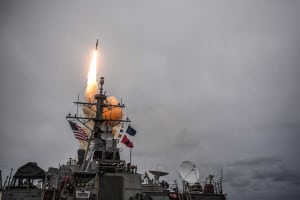
The Missile Defense Agency (MDA) Monday revealed the architecture to defend Guam against ballistic, cruise and hypersonic missiles will consist of the Lockheed Martin [LMT] Aegis combat system, Raytheon Technologies [RTX] Standard Missile (SM)-3 and SM-6 missiles, and the Northrop Grumman [NOC] Integrated Air and Missile Defense Battle Command System (IBCS). The agency is requesting $539 million in the FY ‘23 budget request for the Guam defense mission. During a budget briefing on March 28, MDA officials said the funds are devoted…

 By
By 











